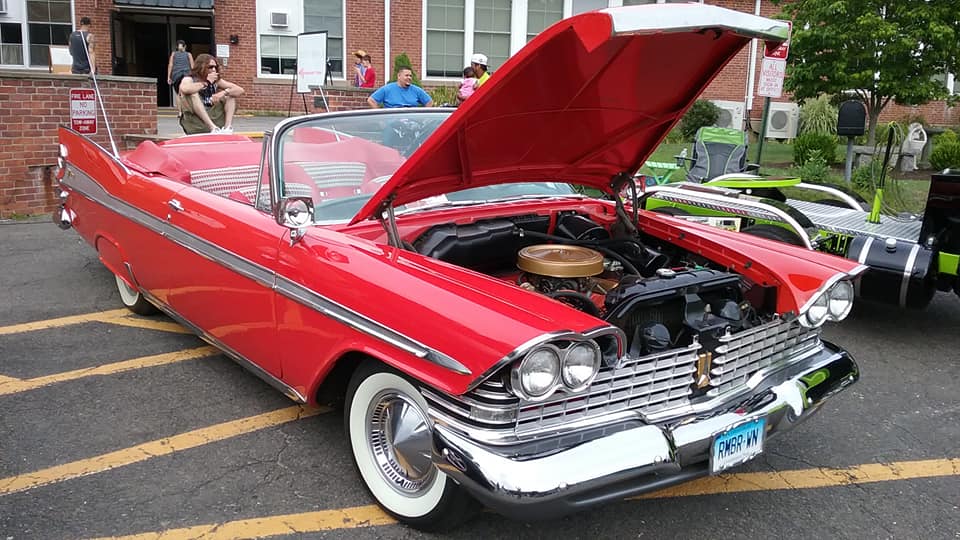Car: Plymouth Sport Fury Convertible
Year: 1959
What makes it special: Plymouth’s Fury was produced from 1955 to 1989. It was introduced for the 1956 model year as a sub-series of the Plymouth Belvedere, becoming a separate series one level above the contemporary Belvedere for 1959. In 1959, Plymouth introduced the Sport Fury as its top model, and the Fury as its second from the top model to replace the Plymouth Belvedere at the top of the Plymouth line-up. The Fury range was now available as a 4-door sedan and station wagon, as well as a 2-door hardtop and sedan. The Sport Fury series had only a 2-door hardtop and convertible. The Sport Fury was dropped at the end of 1959, but was reintroduced in mid-1962.
What made it famous: Identified by the large medallion at the rear of each tailfin, the Sport Fury offered buyers Imperial-grade grandeur on a lesser budget and helped Plymouth maintain its position within “The Big Three.” It was the last year for the design and, to Fury fans, the best of a great vintage that made full use of styling chief Virgil Exner’s imagination in such features as the imitation rear spare tire cover, wraparound beltline and swivel bucket seats. Also for 1959, the 350 V8 was replaced with a 361 cu in version of the Golden Commando with a 2- or 4-barrel carburetor. The dual 4-barrel version of the 318 also was dropped that year, with the 4-barrel available on this engine through the 1962 model year. It also featured the famed “Push-Button” controlled automatic transmission.
Why I would want one: Many feel that the 1958 was the best year, but the 1959 offered just a few more styling cues. Love the rear fins and imitation spare tire cover.
Fun fact: The model appears in popular culture as the subject of interest in the 1983 New York Times Best-selling novel “Christine” by Stephen King about a 1958 custom red and ivory Plymouth Fury that is part of a frightening love triangle. It was later adapted into a movie.

